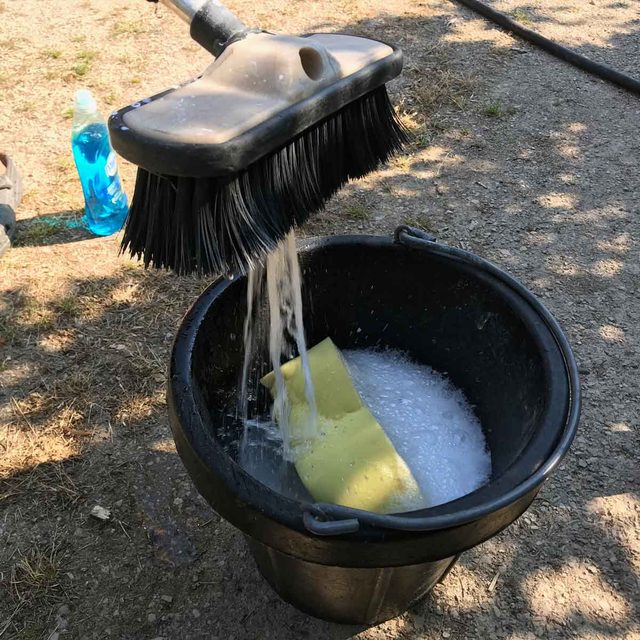How to Wash a Car at Home
A clean, shiny car never stays that way for long, so proper washing techniques are essential. Learn all about how to wash a car yourself.
Our editors and experts handpick every product we feature. We may earn a commission from your purchases.
Introduction
A clean, shiny car looks great. But unless it's a showpiece that never leaves the garage, it won't stay clean for long. Road dust, bug splatters, bird poop and, in winter, salt residue soon cover a vehicle that's driven regularly.
This is where proper washing can help. If your car needs a good cleaning but you're not sure how to do it, follow this detailed step-by-step guide. In less time than it takes to drive back and forth to an automatic car wash, you can do a better job yourself.
Tools Required
- Car washing sponge
- Hose
- Large bucket
- Long-handled brush with hose connection
- Microfiber Cloth
Materials Required
- Bug stain remover
- Car soap or mild dish soap
- Heavy-duty shop towels
- Rubbing alcohol
- Water
Project step-by-step (6)
Fill Your Bucket and Soak the Car
- The first step to knowing how to wash a car properly is getting your soap mixture right.
- Drizzle three tablespoons of car washing soap or mild dish soap into your bucket, then fill the bucket with water. Make sure the solution is nice and foamy.
- Let the soap and water mixture sit while you soak and brush the entire car thoroughly with your hose-attached brush and water only, making sure to get water into all nooks and crannies, including the wheels. Wash off all the loose dirt you can.
Scrub One Section at a Time
- Use your car washing sponge and soapy water to thoroughly hand wash the car one part at a time.
- I like to start with the hood and work my way back. Work on about one quarter of the vehicle before moving on.
- Scrub vigorously with the sponge to remove all the dirt, grease and debris. Add more soap as needed to maintain suds.
Rinse One Section at a Time
- Use your hose-attached brush to scrub and rinse the soap off each section after finishing the sponge work.
- Don’t wait too long after washing to rinse, because the soap and water will dry on the vehicle quickly and could leave spots behind.
- Repeat the wash and rinse pattern for all sections of the vehicle including the roof, windows, grill, head and taillights, fenders and wheels.
Remove Extra-Stubborn Dirt and Grime
- Spray bug stain remover on streaks left by insects. This works best in the shade.
- Let it sit for a few minutes, then rub the spot vigorously with a heavy-duty shop towel.
- Use rubbing alcohol and another shop towel to remove tree gum. Swarfega Original Classic Hand Cleaner works well on tree gum if alcohol doesn’t. Test it on a small, inconspicuous area to be sure it’s compatible with your vehicle’s paint.
- Give a final, thorough rinse and scrubbing to these spots once they’re clean.
Do a Final Inspection and Scrub/Rinse
- Inspect every part of the car carefully to make sure you haven’t left any dirt, grease or soap.
- Scrub and rinse everything one last time with your hose-attached brush when you’re satisfied the car is clean. Don’t have a hose? Learn how to wash your car without a hose.
Dry the Vehicle
- Use your microfiber cloth to dry the vehicle, making sure to absorb all the water droplets so they don’t leave marks on the paint.
- Look for any water marks already formed by drying water, and use the damp microfiber cloth to wipe them away.
- Give your car optional added shine and protection after washing by polishing and waxing it.







